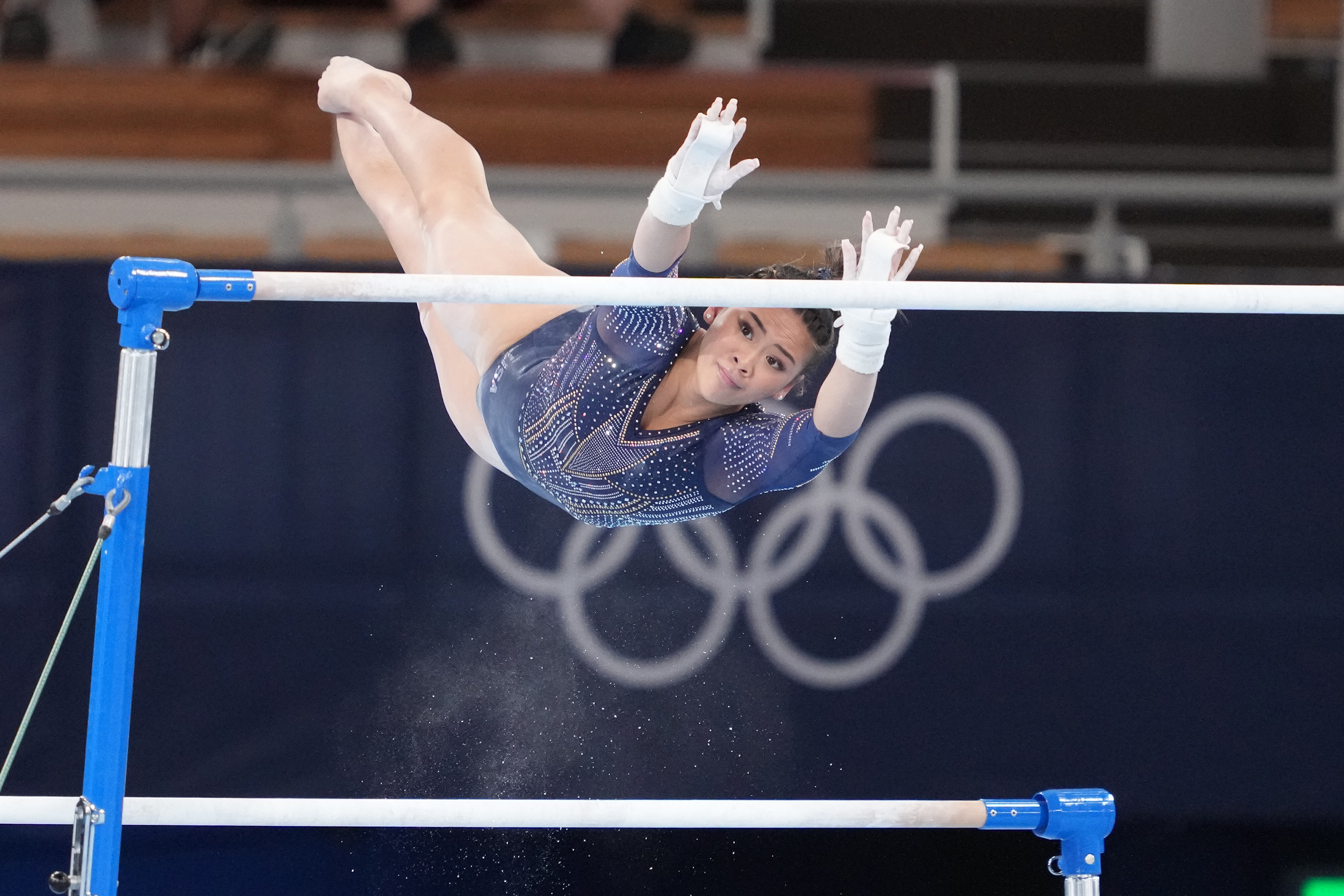
The uneven parallel bars, also known as the uneven bars or simply the bars, are one of the most captivating events in women’s artistic gymnastics. This apparatus consists of two horizontal bars set at different heights, requiring gymnasts to showcase their strength, flexibility, and precision as they swing, flip, and release between the bars. The elegance and athleticism displayed on the uneven bars make it a popular event for both gymnasts and spectators alike.
In this article, we will delve into 20 fascinating facts about the uneven parallel bars. From its origins to noteworthy achievements, we will explore the rich history and technical intricacies behind this captivating gymnastics apparatus. Whether you’re a gymnastics enthusiast or simply curious about the sport, join us as we uncover interesting tidbits and share in the awe-inspiring feats performed on the uneven parallel bars.
Key Takeaways:
- Uneven Parallel Bars, also known as asymmetric bars, are a women’s gymnastics event with adjustable distances between the bars. Gymnasts need immense strength and coordination to perform captivating routines judged on difficulty, execution, and artistry.
- The uneven bars routine is a captivating cornerstone of women’s gymnastics competitions, featuring breathtaking transitions, precise timing, and mental endurance. It showcases the incredible athleticism, strength, and artistry of female gymnasts.
Uneven Parallel Bars are also known as asymmetric bars.
The name “uneven parallel bars” refers to the different heights of the bars, with the higher bar being set at approximately 8 feet while the lower bar is set at around 6 feet.
Uneven Parallel Bars is a women’s artistic gymnastics event.
This apparatus is exclusively used in women’s gymnastics competitions, showcasing the strength, flexibility, and precision of female gymnasts.
The distance between the bars can be adjusted.
Gymnasts can customize the distance between the bars based on their personal preferences and skill level, allowing for more flexibility in performing intricate routines.
The first uneven bars routine was performed in the late 19th century.
The uneven bars event has a long history and has evolved significantly over time, with gymnasts continuously pushing the boundaries of what is possible on this apparatus.
The bars are made of fiberglass with a wood coating.
The combination of fiberglass and wood provides the necessary grip for gymnasts while maintaining a durable surface for high-intensity routines.
Uneven Parallel Bars require immense upper body strength.
Gymnasts need to support their entire body weight while performing complex skills, making upper body strength and control crucial for success on this apparatus.
The bars have different widths.
The higher bar, also known as the “uneven” bar, is typically wider than the lower bar, allowing for a more stable grip during various elements and maneuvers.
Uneven Parallel Bars routines consist of swinging, releasing, and re-grasping movements.
Gymnasts showcase their agility and coordination by smoothly transitioning between swinging elements, releasing the bar, and skillfully catching it again.
Uneven Parallel Bars routines can include skills like release moves, pirouettes, and dismounts.
Release moves involve letting go of the bar and catching it again, while pirouettes are rotations around the bar. Dismounts are the final element where gymnasts dismount from the bars with a spectacular maneuver.
The uneven bars routine is judged based on difficulty, execution, and artistry.
Gymnasts are evaluated on the technical difficulty of their routine, the execution and precision of their movements, as well as their artistic expression and overall presentation.
Gymnasts must demonstrate a variety of grips on the uneven bars.
Different grips, such as the overgrip, undergrip, and mixed grip, are utilized to execute different skills and transitions, adding complexity and diversity to the routine.
The highest score ever recorded on uneven bars is 16.525.
This impressive score was achieved by Aliya Mustafina from Russia at the 2012 London Olympics, showcasing her mastery of the apparatus.
Uneven Parallel Bars routines are performed to music.
Gymnasts often choose music that complements and enhances their routine, adding an artistic and emotional element to their performance.
The uneven bars routine is one of the most captivating events to watch in gymnastics.
The combination of dynamic swings, daring release moves, and graceful transitions makes it a fan favorite, generating excitement and anticipation during competitions.
The uneven bars require precise timing and rhythm.
Gymnasts must have impeccable timing and rhythm to execute each movement seamlessly and maintain a fluid performance throughout their routine.
Uneven Parallel Bars routines can last up to one and a half minutes.
Gymnasts have a limited amount of time to showcase their skills, strength, and artistry, making every second count in creating a memorable routine.
The uneven bars routine is a test of mental and physical endurance.
Gymnasts must maintain focus, strength, and stamina throughout their routine, pushing through physical fatigue while showcasing grace and precision.
Uneven Parallel Bars require exceptional body control and coordination.
Gymnasts need to maintain control over their body while performing intricate movements, requiring a high level of body awareness, balance, and coordination.
Uneven Parallel Bars routines often feature breathtaking transitions between bars.
Gymnasts display their agility by seamlessly transitioning from one bar to another, creating visually stunning moments during their routine.
Uneven Parallel Bars is a cornerstone event in women’s gymnastics competitions.
The uneven bars routine is a highlight of women’s gymnastics competitions, showcasing the incredible athleticism, strength, and artistry of female gymnasts.
Conclusion
In conclusion, the uneven parallel bars are an essential apparatus in artistic gymnastics. They not only require immense strength and flexibility but also demand precise technique and coordination. Understanding the history, rules, and technical aspects of the uneven parallel bars can give us a greater appreciation for the incredible skills demonstrated by gymnasts on this apparatus. Whether you are a fan of gymnastics or just curious about this sport, familiarizing yourself with these 20 facts about uneven parallel bars will undoubtedly deepen your knowledge and admiration for this captivating discipline.
FAQs
1. What are uneven parallel bars?
The uneven parallel bars are a women’s gymnastics apparatus consisting of two horizontal bars set at different heights.
2. What are the dimensions of uneven parallel bars?
The lower bar is approximately 5 to 6 feet high, while the higher bar stands around 8 to 9 feet high. The distance between the bars is adjustable, typically between 150 to 180 cm.
3. Are uneven parallel bars used in men’s gymnastics?
No, the uneven parallel bars are exclusively used in women’s artistic gymnastics.
4. When were uneven parallel bars introduced in gymnastics?
The uneven parallel bars were added to women’s gymnastics events in the 1952 Olympics.
5. What are the primary skills performed on uneven parallel bars?
Gymnasts execute various techniques such as swings, releases, circling moves, pirouettes, and dismounts. These skills require a combination of strength, balance, and coordination.
Uneven parallel bars captivate audiences with gymnasts' gravity-defying skills and artistry. Discover more about legendary women's gymnastics champions like Dominique Moceanu, who've left indelible marks on the sport. Explore fascinating facts surrounding Olympic sports, from their origins to modern-day marvels. Dive deeper into artistic gymnastics and uncover secrets behind athletes' awe-inspiring performances. Whether you're a die-hard gymnastics fan or simply curious about sports history, these engaging articles promise to entertain and enlighten.
Was this page helpful?
Our commitment to delivering trustworthy and engaging content is at the heart of what we do. Each fact on our site is contributed by real users like you, bringing a wealth of diverse insights and information. To ensure the highest standards of accuracy and reliability, our dedicated editors meticulously review each submission. This process guarantees that the facts we share are not only fascinating but also credible. Trust in our commitment to quality and authenticity as you explore and learn with us.


